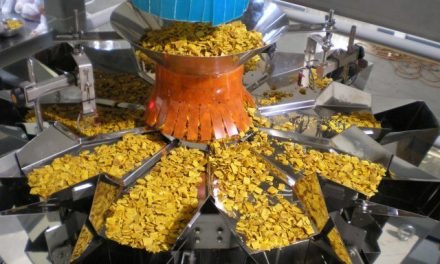Consumers worldwide are increasingly adopting a vegetarian lifestyle driven by concerns about food sustainability, the environment, and health. This shift, which began a decade ago, has gained momentum in recent years due to efforts by marketers and food manufacturers. Rajat K Baisya explores the key trends and practices shaping the future of sustainable food production.
Table of Contents
The sustainability issues, environmental concerns, and concerns for human health and nutrition are driving consumers to become vegetarians. The trend is very clear. Consumers are turning towards vegetarian alternatives to non-veg food and food products. It started about a decade ago, slowly but surely. During the last couple of years, the momentum has picked up due to the relentless efforts of the marketers supported by the sustainable food ingredients manufacturers, including natural and nature-identical flavours, and natural additives such as emulsifiers and texturisers.
No marketer is willing to declare anything in their product label as synthetic. Processors would like to make the product look natural and, as such, resort to using eco-friendly packaging materials and green technologies, recycling the waste, and selectively using sustainable food ingredients to participate in governmental and societal efforts to be seen as contributors to sustainability and the circular economy..
Shift Towards Sustainable Food Choices
Sustainable food production doesn’t mean only sustainable agricultural practices for the production of primary foods. Food processors globally are increasingly turning their attention to the impacts of food processing and manufacturing on food sustainability, and that itself is becoming the primary objective of the Farm to Fork strategy. It is also a hallmark initiative of the new European Green Deal.
There are four major steps that food processors in all markets, including developing, emerging, and developed markets around the world, are trying to implement to reduce their environmental footprint. These are:
Innovations in Sustainable Food Packaging
Food packaging is a major source of waste and pollution. Over 78 million metric tons of plastic packaging are produced each year, and only 14% of it is recycled. Plastic is usually made from non-renewable sources like petroleum oil or natural gas, and ultimately huge amount of plastic ends up in a landfill. Processors across the food industry are stepping up to the challenge to find innovative ways to minimize the environmental impact of food production, processing, and packaging.
Food marketers these days are using environment-friendly packaging materials like glass and metal. Glass has other disadvantages, such as relatively higher wastage due to breakage and relatively higher freight costs. However, glass has come back as processors’ choice once again, as we have seen that during the last couple of decades, since 1990, plastic has replaced glass, and all glass manufacturers have closed down. Some of them have resurfaced again and resumed production.
When it comes to metal food packaging, sustainably sourced aluminium is one of the most environmentally responsible choices. Aluminium is one of the most easily and widely recycled metals – the recycling process requires only 5% of the energy it takes to refine new aluminium. Metal cans, including aluminium, are normally recycled, and consumers are given incentives to return beverage and beer cans, for which large organised retail stores have automated machines to take those cans and give credit to the consumers for the same.
A growing number of manufacturers are opting for wood and paper-based alternatives. Wood and paper have the advantage of being biodegradable, renewable, and easily recyclable. They are also lightweight, resulting in lower freight costs, and are easy to handle, providing more convenience to carry and store. However, it is critical that the paper and wood used to make the packaging also come from sustainably managed forests.
Some manufacturers are developing innovative alternative packaging from biodegradable materials, including seaweed, fibres from agricultural crops, and even fish skin, as well as starch and starch derivatives as natural and edible packaging materials. Some of these new alternatives have the potential to replace single-use plastics.

Energy and Water Efficiency for Sustainable Food Processing
Food Processing and production are both energy and water-intensive activities, and the processors use large amounts of groundwater. Water is used extensively in food processing, both as an ingredient and as process water for cleaning, sanitising, and sterilising, and also as a coolant. Processors are now resorting to the recycling of this water. Renewable energy and boiler flue gases are used for heat recovery and also for carbon dioxide recovery. The deployment of smart meters and the implementation of energy efficiency and sustainable water management systems also help in the conservation of this natural resource.
Sustainable Ingredient Sourcing
There are some ingredients that have been linked with food sustainability issues. For example, palm oil, cocoa, and coffee, for instance, have been linked to deforestation, habitat destruction, and child and forced labour, among other food sustainability issues. Manufacturers use palm oil because it is cheaper and lighter and can be easily drained after deep frying, say, potato or finger chips (French fries), and is less prone to oxidation, giving a relatively higher shelf life. However, processors are increasingly becoming aware of these sustainability issues and taking measures to decide about sustainable food ingredients to be used.
Reducing Food Waste for a More Sustainable Food System
Nearly one-third of the food produced for human consumption gets wasted each year. It amounts to 1.3 billion tons of food waste annually. This is not only a major loss of food in itself. In addition, there is also a loss of the resources used to produce it, like water, soil nutrients, transportation energy, and labour. Around a third of this food is wasted during farming and post-harvest handling, and another fifth is wasted by end-consumers, resulting in almost half of all food waste that stems from processing and manufacturing. Farm waste and process waste are highest in developing countries. However, wastage by consumers is highest in developed countries.
Many social organisations are working to take the waste in hotels and restaurants and use that to feed the hungry poor. Food manufacturers and processors can significantly reduce food waste by optimising their processes, improving manufacturing efficiency and management systems, and implementing mechanised handling and storage systems.
Advancing Sustainable Food Production Practices
Consumers across the world are becoming increasingly aware and conscious about what food they are buying after due consideration of concerns like what food ingredients the processors are using, as well as what kind of measures food marketers are taking to protect the environment and contribute to thesafety, health, and nutrition of the consumers.
Manufacturers are making all kinds of claims about their efforts to reduce their carbon footprint, resorting to food sustainability initiatives. In international trade, buyers insist on this information before placing orders. These initiatives are changing the processing and formulations of food products, which requires life cycle thinking consisting of carbon footprint (CF), ecological footprint (EF), and life cycle assessment (LCA).
Have a topic to share with the industry? Write to us editorial@pfionline.com

















